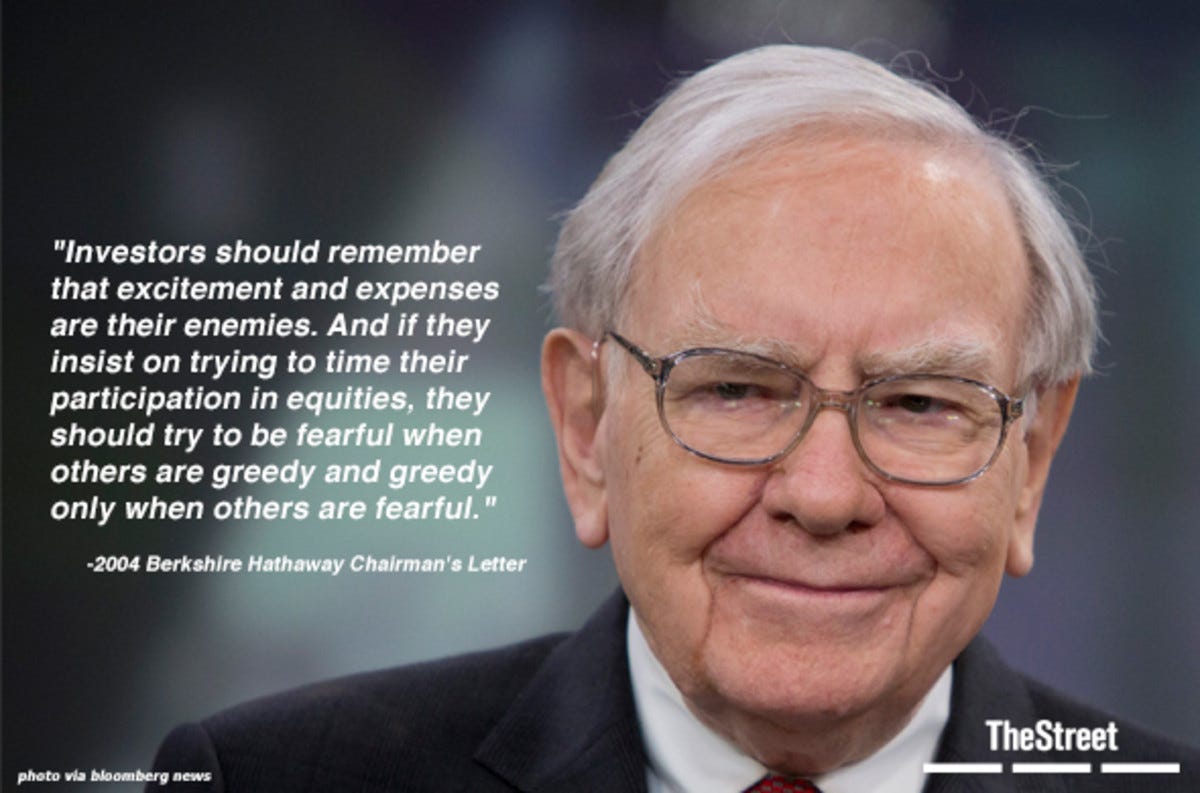Meeting people from various backgrounds, I've noticed a common misunderstanding about investment returns. Many are attracted to the idea of making quick money and lose interest when they hear about the more modest 8-10% annual returns typical of USD-based investments.
It's crucial to grasp that promises of 5-7% “monthly” profits or higher in any investment aren't indicative of stable performance and often come with substantial risks. Understanding the underlying asset class is key to comprehending this.
For instance, Warren Buffett, a renowned investor, has achieved a Compound Annual Growth Rate (CAGR) of around 20% over very long period time & if I mention that an average investor is earning 8-9%, it seems reasonable in comparison.
Earning a 12% annual return would be considered exceptional, but surpassing 20% would imply outperforming Warren Buffett, which requires substantial evidence. Such performance isn't just about short-term gains but needs to be consistently demonstrated over a long period, ideally a decade or more, even in the realm of short-term trading.
In my newsletter, I've outlined some points comparing trading with long-term investing, which I'll explain further below.
1. Not for Everyone:
Did you know that 80% of all day traders call it quits within the first two years? Shockingly, within five years, only 7% remain steadfast in their pursuit. (Ref: 1)
2. Decision Fatigue:
Selling winners and holding onto losers - it's a common pitfall among investors. Statistics reveal that 60% of sales are winners, while 40% are losers. (Ref: 2, 6)
3. Win for Investors:
Here's a sobering fact: the average individual investor underperforms a market index by 1.5% per year. Active traders fare even worse, lagging behind by 6.5% annually. (Ref: 3)
4. This is Not Passive Income:
While profitable day traders make up only 1.6% of all traders, they're incredibly active, accounting for 12% of day trading activity. So even those who are profiting are not doing it passively (Ref: 1)
5. Greed is the Driver:
It's fascinating how financial behavior mirrors human psychology. Poor individuals tend to spend more on lotteries, and investors with high aspirations often hold riskier stocks. (Ref: 4)
6. Gambling Element & Gender Split:
Men trade more than women, and unmarried men are particularly active in trading. However, gambling habits transcend income levels, as gamblers across all income groups tend to underperform non-gamblers. (Ref: 5, 4)
7. Lottery vs. Trading:
The introduction of a lottery in Taiwan led to a 25% drop in trading activity. Additionally, during periods of massive lottery jackpots, individual investor trading dwindles. The economic impact? Losses to traders equivalent to 2% of GDP. (Ref: 7, 8)
8. Confirmation Bias:
Investors often trade more actively after experiencing success. This phenomenon, known as confirmation bias, can lead to risky behavior and inflated confidence. (Ref: 11)
Refrences:
– 1Barber, Lee, Odean (2010): Do Day Traders Rationally Learn About Their Ability?
– 2Odean (1998): Volume, volatility, price, and profit when all traders are above average
– 3Barber, & Odean (2000): Trading is hazardous to your wealth: The common stock investment performance of individual investors
– 4 Kumar: Who Gambles In The Stock Market?
– 5 Barber, Odean (2001): Boys will be boys: Gender, overconfidence, and common stock investment
– 6Calvet, L. E., Campbell, J., & Sodini P. (2009). Fight or flight? Portfolio rebalancing by individual investors.
–7Barber, B. M., Lee, Y., Liu, Y., & Odean, T. (2009). Just how much do individual investors lose by trading?
– 8Gao, X., & Lin, T. (2011). Do individual investors trade stocks as gambling? Evidence from repeated natural experiments
– 9Strahilevitz, M., Odean, T., & Barber, B. (2011). Once burned, twice shy: How naïve learning, counterfactuals, and regret affect the repurchase of stocks previously sol.
– 10Da, Z., Engelberg, J., & Gao, P. (2011). In search of attention
– 11De, S., Gondhi, N. R. & Pochiraju, B. (2010). Does sign matter more than size? An investigation into the source of investor overconfidence
Referral links for GCC based platforms where I invest in:
🏡 Getstake (Get 250 AED): https://getstake.com/signup?ref=MUHAMMAD2337
📈 SARWA (Get 50 USD on invest & save platform): https://fas.st/t/uK6y58eS
📊 Baraka (Get upto 25 USD on stocks platform): Referral code: Z9TVDT Download the app: https://getbaraka.com/en/
🏠 Smartcrowd (Get 250 AED): https://my.smartcrowd.ae/?signup=true&r=wkhan
Highlights of videos I uploaded last week are linked below.
About Myself
I post 3 videos every week on my YouTube channel on the topics of productivity & personal finance specifically for expats & in general for wider Pakistani community. Besides this, I update this website / blog on weekly basis so do visit regularly for updates - To get value out of the content, please consider subscribing both the YouTube channel and the newsletter.
💻 Interested in all the gadgets I use on daily basis?: https://walikhan.co/the-gadgets-i-use/
For 1-1 sessions on booking basis with the following core topics of discussion:
Productivity
Personal Finance
YouTube & Social Media
Price for the session can be confirmed by emailing your details at financewithwali@gmail.com & booking can be made with the link: https://calendly.com/wali2k/1-hour-1-1-session
Disclaimer: I am not a financial advisor and consider these sessions for knowledge sharing and discussion only.
My social media handles:
Twitter
Instagram
Facebook
Linkedin
Tiktok
Youtube (Main channel)
YouTube (English channel)
Youtube (Short clips channel)
KEEP HUSTLING ;-)




